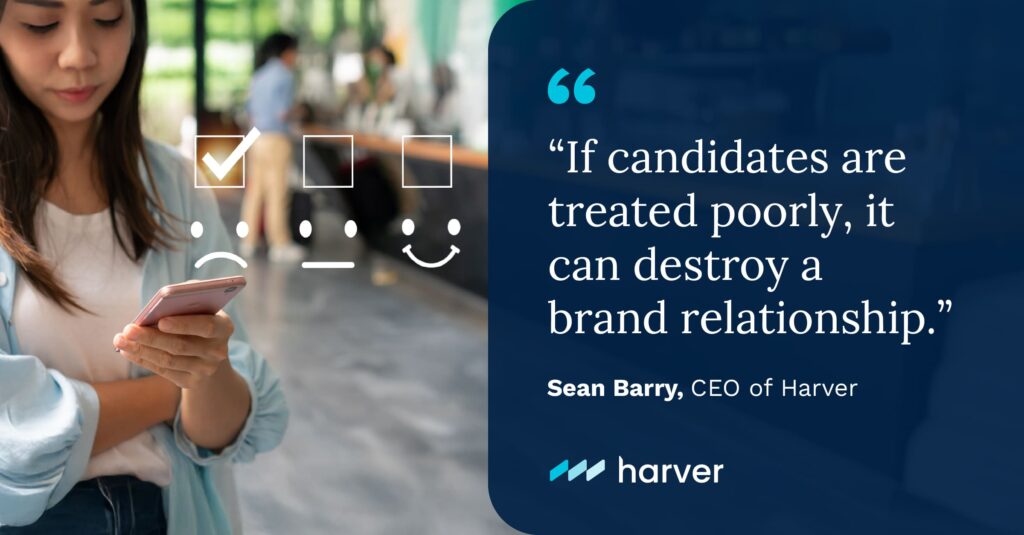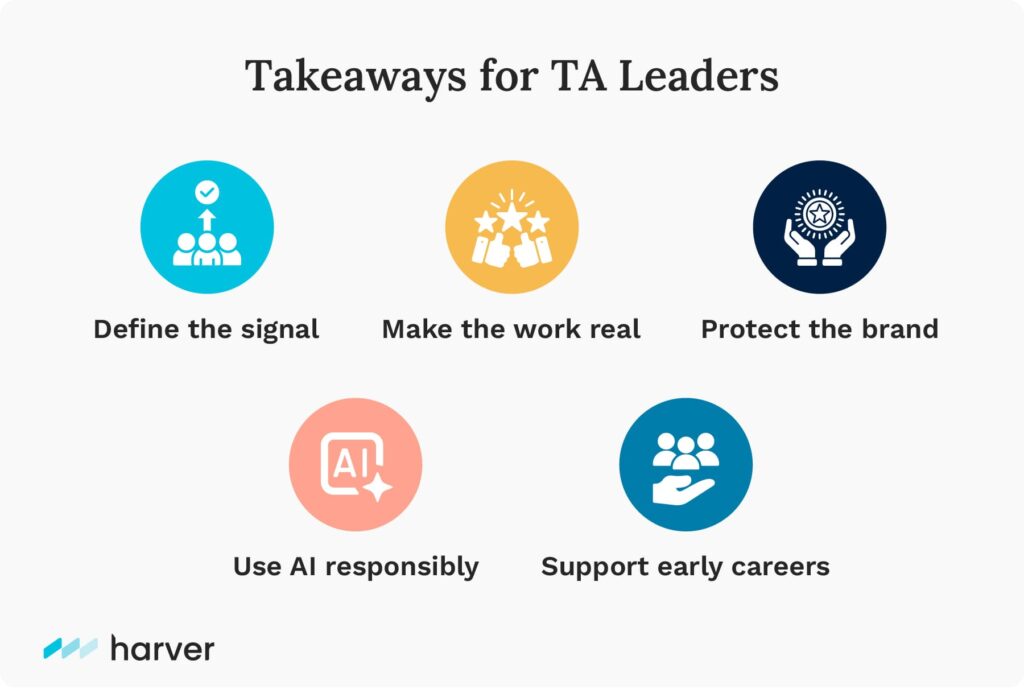Hiring hasn’t gotten easier. Between globalization, AI-generated noise, fraud, and record application volume, talent teams are under pressure to move faster, do more with less, and still get it right. That’s exactly where Harver focuses: pairing scientific assessments with a people-first process to improve fit, reduce turnover, and elevate the candidate experience.
In a recent episode of HR.com’s Totally Talent podcast, Harver CEO Sean Barry sat down with host Mike Wood to unpack that balance, and what it means for TA leaders right now.
Read on for highlights from the conversation or watch the full episode for even more insights.
Why Fit (Still) Wins
Harver’s mission is simple: to connect candidates and employers through science-backed predictive assessments that provide both sides with the insight they need to find the right fit.
As Sean explained, “A good outcome is when an offer is extended with confidence from the hiring company and accepted with enthusiasm from the candidate—because the company took the time to get to know who they are, personally and completely, not just their resume.”
That’s how you get staying power, satisfaction, and better outcomes beyond day one.
Sean underscored just how important this is by drawing a parallel many know too well: “A lot of times, people are more likely to stay in a toxic job longer than a toxic relationship. They don’t always know their strengths, or what a good-fit opportunity would be. So they feel stuck.”
Science With a Human Touch
Harver’s approach starts by defining the traits, attributes, skills, and job competencies that actually predict success—then assessing them using statistically valid, fair methods. Importantly, Harver doesn’t reduce decisions to an AI thumbs-up or thumbs-down; assessments orient candidates to the work and help both sides see probability of success, equitably across different backgrounds and experiences.
“We’re adamant: we don’t tell people who to hire… We run an efficient battery of tests so candidates and hiring teams get insight into the probability of success in the job,” Sean noted.
Expectation-Setting Reduces Early Churn
Misaligned expectations drive early attrition and duplicate work. Sean highlighted why it’s critical to be explicit about what the job is, how success is measured, and what the day-to-day looks like—before the offer. Harver supports clients with Realistic Job Previews (RJPs) and structured interview guides to align expectations, improve candidate experience, and reduce pre-90-day churn.
Practical tweaks matter, too. For example, scheduling and location preferences captured early in the flow can remove friction for high-volume roles, leading to clearer expectations on both sides.
Discover how ADT partnered with Harver to reduce attrition by 13%.
The Candidate Experience Is a Brand Experience
Easy-apply dynamics have flooded TA teams with volume—and risk. Sean cautioned that “if candidates are treated poorly, it can destroy a brand relationship. People are quick to go to social media if they’re unhappy with how they’re treated, which is totally appropriate.”

Harver’s view: fairness and respect aren’t just nice to have; they’re strategic, especially for consumer brands fielding massive applicant pools.
AI’s Role: Powerful, With Guardrails
AI is changing how we work, but it can’t replace judgment or culture. Sean warned against the “generative gobbledygook” that says a lot without saying anything, and the false comfort that tech alone will fix messy human problems. The mandate for TA leaders: use AI to scale what works, keep humans in the loop, and hold the line on quality to avoid downstream turnover and brand damage.
As he put it, “At the end of the day, the ‘human’ part of human resources doesn’t go away with AI. It’s getting harder.”
Early Careers: Helping Talent Find Their Lane
Entry-level and new-grad hiring is among the noisiest, with candidates who haven’t built long resumes yet. Harver’s Smart Job Navigator assesses traits and skills first, then routes applicants to roles where they’re most likely to thrive. It’s a practical way to make early-career hiring more equitable, more efficient, and more human.
Takeaways for TA Leaders
- Define the signal. Align on the few traits and competencies that predict success for each role, then measure them consistently.
- Make the work real. Use RJPs and expectation-setting to reduce early churn and improve satisfaction.
- Protect the brand. Treat every applicant like a future customer; fairness and respect scale trust, referrals, and retention.
- Use AI responsibly. Automate the rote, preserve judgment, and keep quality high to avoid costly mis-hires.
- Support early careers. Meet new grads where they are with trait-first guidance, not resume-first filters.

Hiring is only getting harder, but as Sean makes clear, it’s also an opportunity. With science, strategy, and a human touch, talent teams can build processes that deliver better fits and better outcomes.
Watch the full conversation on YouTube or HR.com to hear all of Sean’s insights.


